Worksheet #9: Work, energy, and power
1/59
There's no tags or description
Looks like no tags are added yet.
Name | Mastery | Learn | Test | Matching | Spaced |
|---|
No study sessions yet.
60 Terms
Work: unit of measurement
Joule (J)
linear work
product of force applied to an object and its displacement
linear work: formula
W = F x d
angular work
product of torque applied on an object and its angular displacement
angular work: formula
W = T x θ
positive work
force/torque and object's displacement are in the same direction
positive work: muscles
concentric (shortening) muscle contraction
negative work
force/torque and object's displacement are in the opposite direction
negative work: muscles
eccentric (lengthening) muscle
kinetic energy
energy possessed by a moving object
kinetic energy: equation
KE=1/2mv^2
factors that affect kinetic energy
mass (kg) and velocity (m/s^2) on the object
gravitational potential energy
energy an object possesses due to its height
gravitational potential energy: equation
GPE=mgh
factors that affect gravitational potential energy
mass (kg) and height (m) of the object
strain energy
potential energy an object possesses due to deformation
strain energy: equation
SE=1/2kx^2
factors that affect strain energy
stiffness of structure (N/m) and the deformation (m) caused
total mechanical energy
energy the object possesses due to motion or position in space
(always a positive number)
total mechanical energy: equation
E = KE + PE
factors that affect total mechanical energy
motion or position of object in space
law of conservation of mechanical energy
when gravity is the only external force acting on the object, the total mechanical energy of the object remains constant
Kinetic energy increases
A (because they are running fast)

strain energy increases
B (energy is stored in the pole because it bends/deformed)
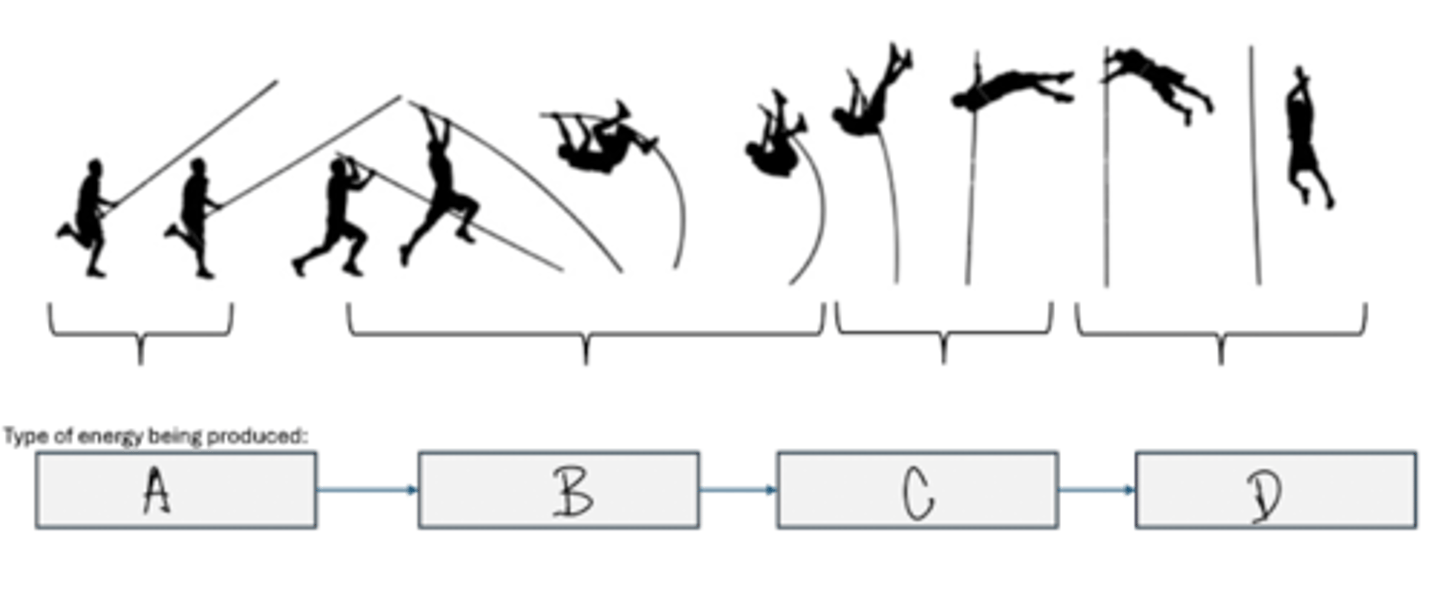
gravitational potential energy increases
C (the height of the the individual and the pole increases)
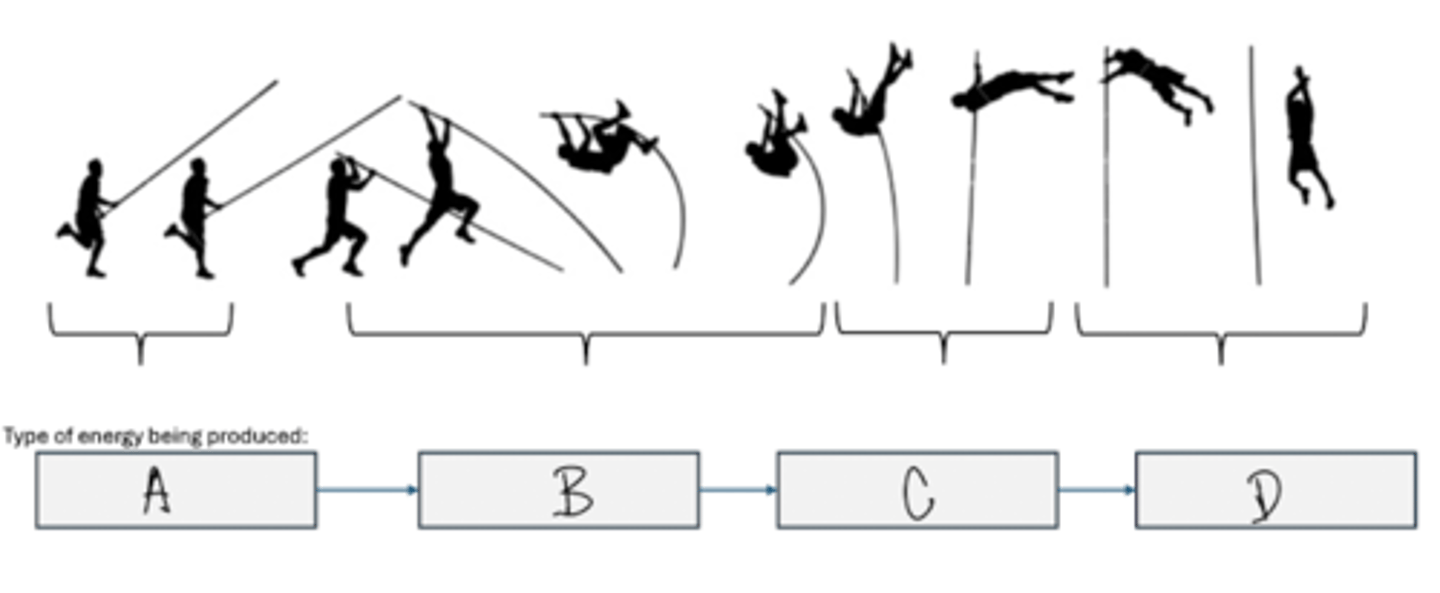
kinetic energy increases
D (the individual is falling, its velocity increases)
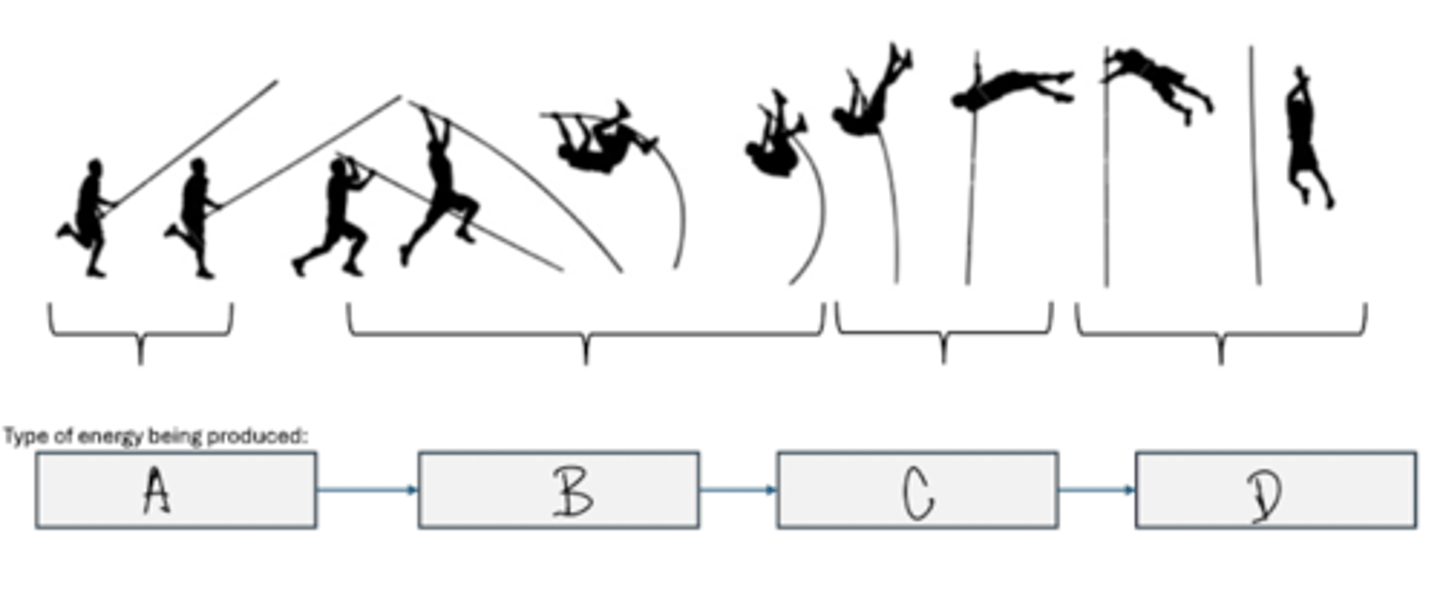
Type of potential energy
gravitational potential energy and strain energy
energy
something an object "has"
(The ability to do work or cause change)
the more energy=
the more capacity to produce work
Work-Energy Relationship
work produced on an object is equal to the change in mechanical energy of the object

positive work...
increases the object's mechanical energy.
work is done to transfer mechanical energy to the other object.
negative work...
decreases the object's mechanical energy
work is done to absorb the other object's mechanical energy
calculating force in mechanical energy/work
F = Δ total mechanical energy / d
mechanical power
rate at which mechanical work is being produced
mechanical power: unit of measurement
J/s or Watt (W)
mechanical power: formula
power = F x d/t
power is + when the work is...
+ and the muscle is contracting concentrically
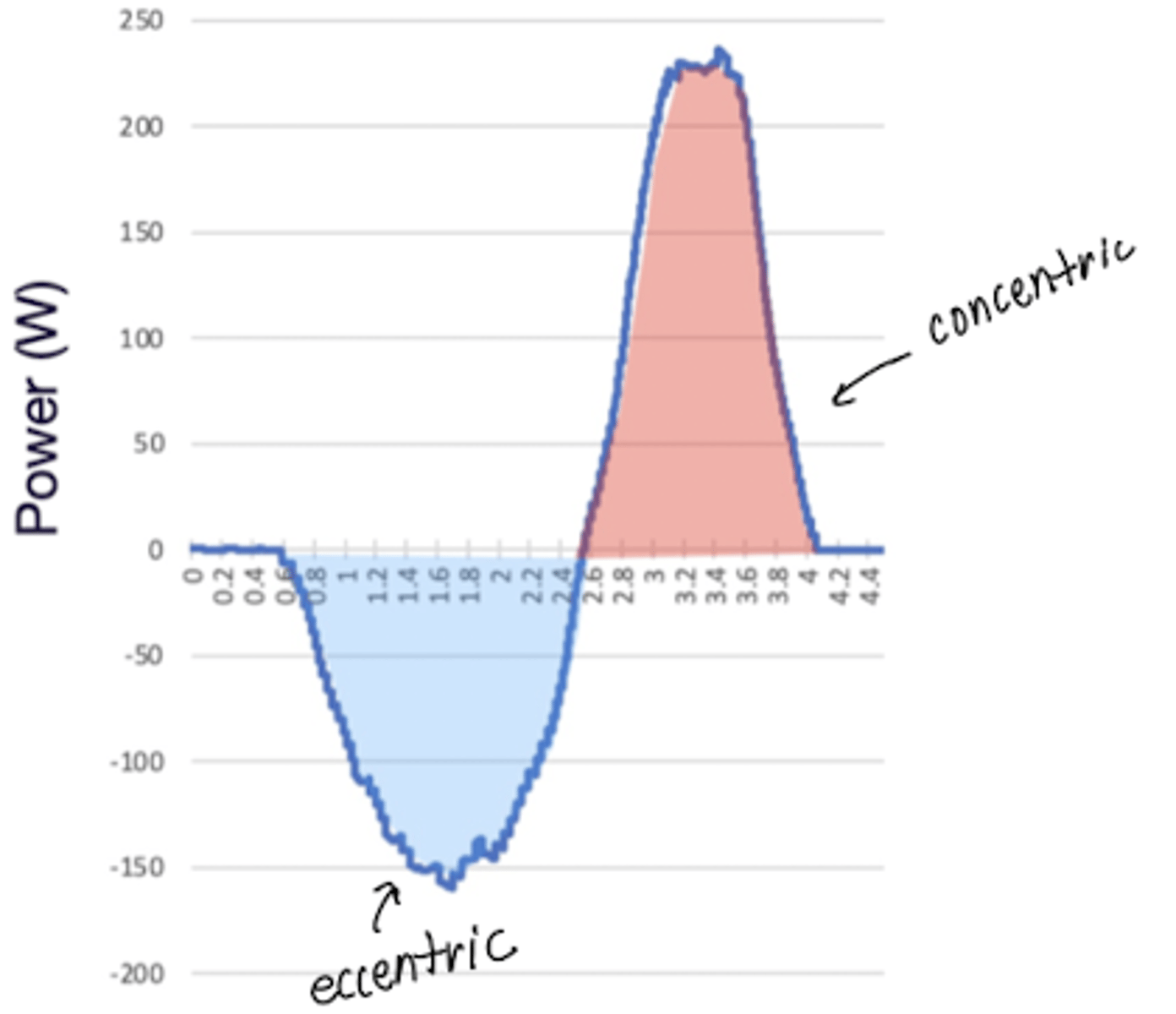
power is - when the work is...
- and the muscle is contracting eccentrically
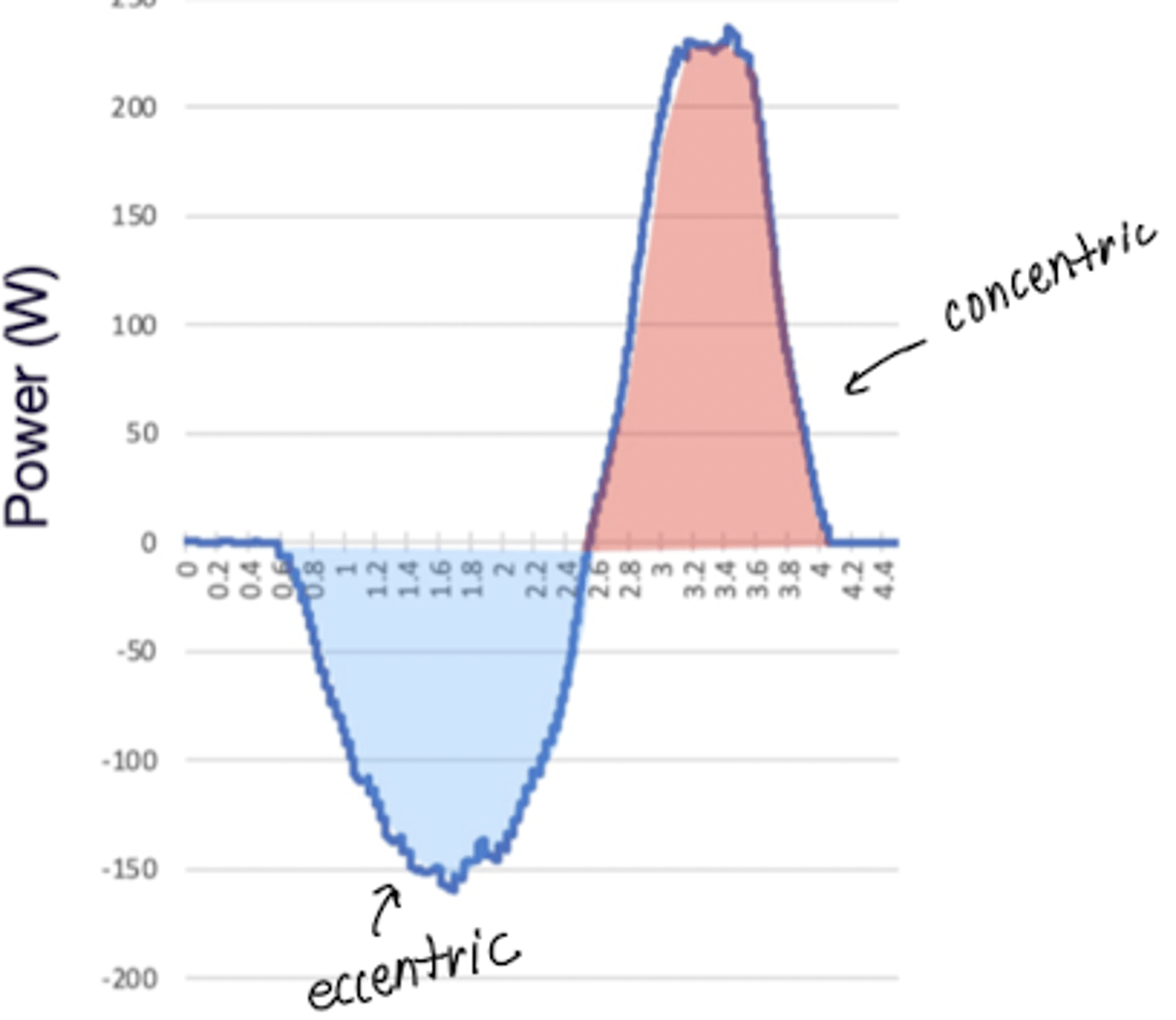
the area under power curve
represents the work produced (and the mechanical energy transferred)

increase the average force needed to lift the barbell based on the work-energy relationship
lifting barbell higher, adding more weights to the barbell, moving the barbell up quicker
decrease the average ground reaction force applied to the gymnast during landing
greater displacement of the body's COM during landing
ascending in bench press: shoulder joint motion
+ horizontal adduction
descending in the bench press: shoulder joint motion
+ horizontal adduction
bench press ascending: sign of shoulder joint motion
+ horizontal adduction
bench press ascending: sign of shoulder joint torque produced by pec major
+ horizontal adduction
bench press ascending: muscle contraction
concentric
bench press pause at top: sign of shoulder joint motion
0
bench press pause at top: sign of shoulder joint torque produced by pec major
+ horizontal adduction
bench press pause at top: muscle contraction produced
isometric
bench press descending: sign of shoulder joint motion
- horizontal abduction
bench press descending: sign of shoulder joint torque
+ horizontal adduction
bench press descending: muscle contraction
eccentric
squat ascending: sign of knee joint motion
+ extension
squat ascending: sign of knee joint torque produced by quadriceps
+ extension
squat ascending: muscle contraction
concentric
squat brief pause: sign of knee joint motion and torque produced by quadriceps
0
squat brief pause: muscle contraction
isometric
squat descending: sign of knee joint motion
- flexion
squat descending: sign of knee joint torque produced by quads
+ extension
squat descending: muscle contraction from quads
eccentric